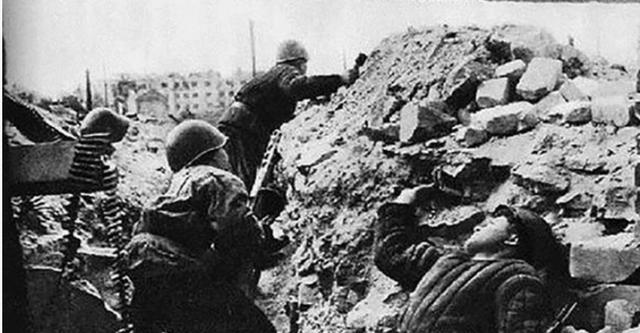What is history: it is the echo of the past to the future, the reflection of the future on the past. - Hugo

At 4:30 a.m. on June 22, 1941, the Soviet-German War broke out. Operation Barbarossa begins. The Germans were presented in three army groups in the north, center and south. On the 1,500-kilometer-wide front from the Baltic Sea to the Carpathian Mountains, a lightning surprise attack was launched against the Soviet Union in three ways: north, central and south.
On 9 July, the Battle of Bialistok-Minsk ended and the Soviet Western Front (commander General Pavlov) was surrounded by German forces. On 5 August, the Siege of Smolensk ended with the annihilation of the Soviet 16th Army (Lieutenant General Lukin), the 23rd Mechanized Army, and the 19th and 20th Armies (Commanders Lieutenant General Konev and Lieutenant General Kurochkin).
At this point, Army Group Center opened the door to Moscow. Front-line German generals such as Bauke and Guderian were eager to kill Moscow, and army leaders such as Brauchitsch and Halder wanted to continue eastward and occupy the Soviet center of power in advance. But Hitler still insisted on the capture of Leningrad and Ukraine as his main goal.
He believed that Ukrainian raw materials and agricultural products were of great importance to Germany's future operations; Crimea was an air base used by Russia to bomb Romanian oil fields and therefore had to be eradicated, and the still powerful Soviet Southwestern Front posed a serious threat to the flanks of the German Army Group Center. To this end, Hitler issued Directive No. 35, ordering Guderian's 2nd Panzer Corps, to move south, in cooperation with Army Group South, to carry out a great encirclement of the Soviet forces near Kiev.
Kiev was the third largest city in the Soviet Union, and its strategic position was very important, it was located at the confluence of the Döber and Jessna rivers, land, water and air, both as a transportation fortress in the southwest of the Soviet Union, and as a necessary way for the German army to seize the Donets industrial zone and the Caucasus oil fields.
On 5 July, with the strength of 45 divisions and 1 brigade (3 hungarian brigades and 3 Italian divisions), the German Army Group South, with the support of the 4th Air Force, broke through the march into the old Soviet border to build fortifications, kicking off the two-and-a-half-month Battle of Kiev.
Taking part in the Battle of Kiev included the Soviet Southwestern Front (commanded by General Kilbonos) of the 5th Army (commanded by Major General Potapov), the 37th Army (commanded by Lieutenant General Vlasov), and the 21st Army (commanded by Commander B. B. Lieutenant General N. Kuznetsov), the 26th Army (commanded by Lieutenant General Skotenko) and the 38th Army (commanded by Major General Zhiganov). The Bryansk Front (commanded by Lieutenant General Yelyomenko) was under the command of the newly formed 50th and 13th Armies.
It has jurisdiction over 38 infantry divisions, 14 tank divisions, 4 mechanized divisions, 6 airborne brigades, 1 cavalry division, and 12 fortified areas. The total strength of the army is 800,000 people. (When the war began on June 22, the Soviet Southwestern Front, which had 1 million men, 5,890 tanks, and 1,660 aircraft, suffered heavy losses in raids and subsequent unprepared counterattacks.) Some 4380 tanks and 1220 aircraft were destroyed and discarded during the war. )
The Battle of Kiev began on July 5, 1941, and ended on September 26, 1941. In this war, most of the Soviet 5th, 21st, 37th, and 26th Armies, as well as one part of the 40th and 38th Armies, were annihilated. The commander of the Southwestern Soviet Front, General Kilbonos, the chief of staff, Tupikov, and the political commissar Bulmishtenko, were killed in the breakout. 650,000 people, including Potapov, commander of the Soviet 5th Army, were captured. 884 tanks, 3718 artillery pieces, 3500 vehicles were destroyed or captured by the Germans.
The Battle of Kiev was arguably the largest siege of World War II. For the German army, it is undoubtedly a successful masterpiece from a tactical point of view, and strategically, there are good reasons, but the only weakness is that "time is not enough", especially the German army is not fully prepared for winter combat.
At the Battle of Kiev, 80 divisions of the Soviet Union's most powerful Southwestern Front were completely annihilated, and the Bryansk and Southern Fronts were severely damaged. The situation in the entire Soviet-German battlefield was even more unfavorable to the Soviet army. After the German occupation of Kiev, the germans advanced to the Kharkiv industrial area, the Donbass and crimea of the various proximity, the southwestern gateway opened, and Moscow and other hinterlands were seriously threatened.
The Soviet Union's military presence in the southwest was exhausted, and it had to mobilize large numbers of troops from the Far East and Siberia to rebuild new lines of defense in a much deeper area.